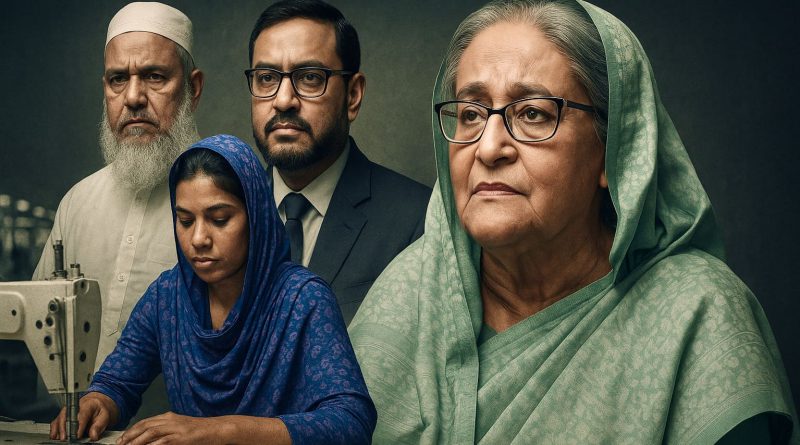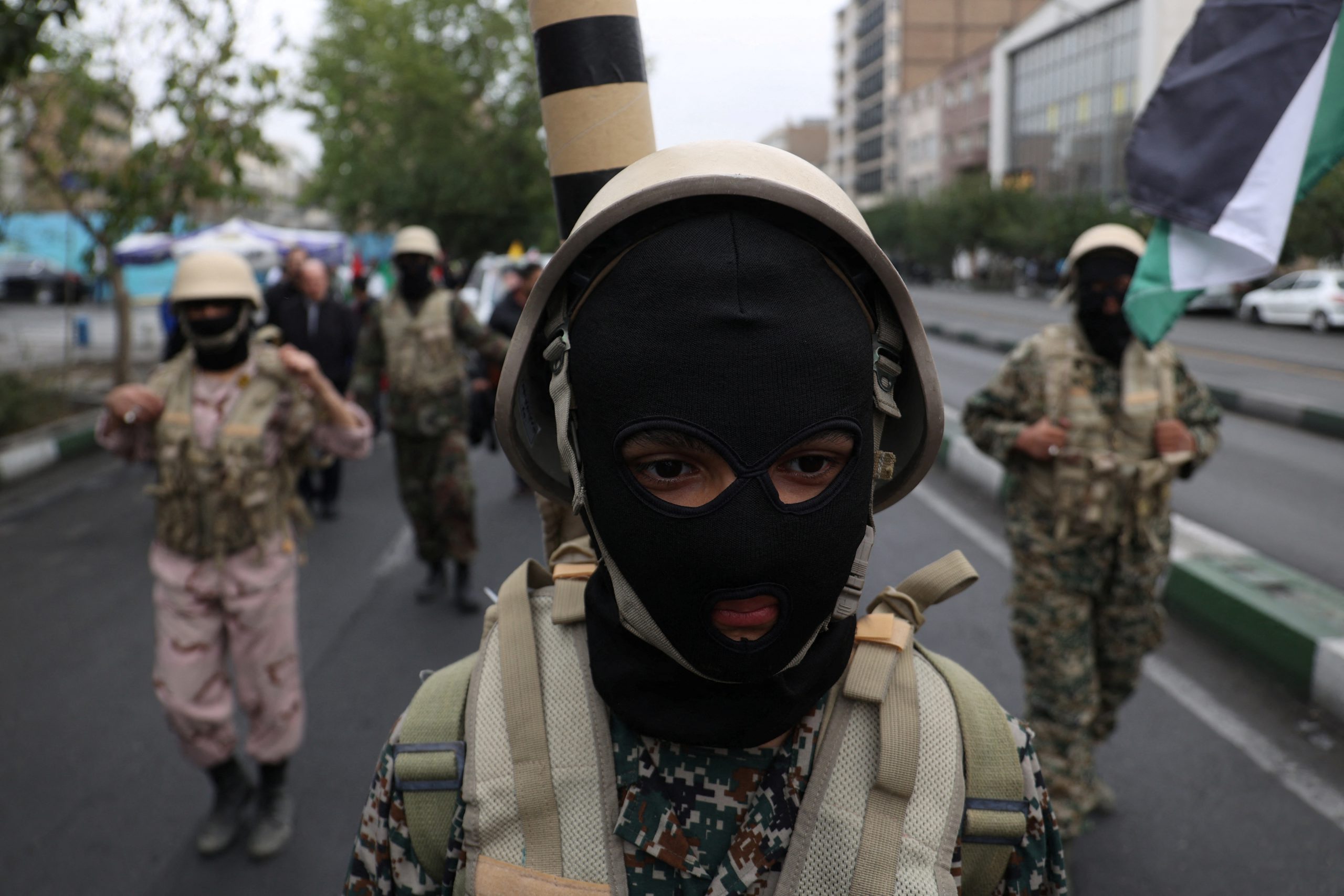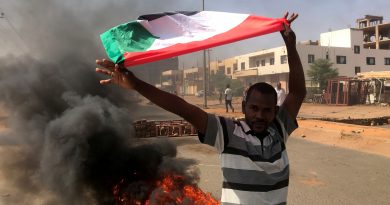The Story Behind Bangladesh’s Women and the Rise of Religious Schools
Sheikh Hasina made significant strides toward advancing women’s economic empowerment, yet her efforts were ultimately overshadowed by the rapid growth of religious mobilization.
Sheikh Hasina. There’s a name that echoes in every conversation about women’s rights in Bangladesh. Awards? She’s got a shelf full of them. Global Women’s Leadership, UN’s ‘Planet 50-50 Champion’, Agent of Change. Sheikh Hasina, as one of the world’s longest serving female prime ministers, clearly merits recognition for her significant contributions to the economic empowerment of women.
Barrister Mohibul Hossain Chowdhury Nowfel, the education minister at Sheikh Hasina’s cabinet, recently discussed a significant social development on the A Team podcast. He observed a direct correlation between the increase in women entering the garment industry and the proliferation of madrassa enrolments nationwide. For working mothers, this arrangement offers reassurance that their children are both safe and receiving an affordable education grounded in religious values during their long work hours.
When opposites correlate
What does all this glitter mean for the women sweating it out on the factory floors? I’m talking about the women stitching your next fast-fashion impulse buy. Factories across the country are crammed with mothers, daughters, wives. More women than ever are out there, hustling, earning, sometimes even outearning the men at home. While these women are bent over sewing machines, churning out clothes for the global market, who’s taking care of their kids? Affordable Childcare? Support? Most days, it’s a patchwork of neighbours, older siblings, or just pure luck. No number of shiny plaques can stitch up that hole.
Over half the parents out there, especially moms, ‘No babysitter, no job’. Simple as that. Some women just gave up working altogether. Others said “no thanks” to jobs they wanted. There really wasn’t much choice, honestly. Single moms? Even tougher. And if both folks at home had to work, forget it. Who’s watching the kid?
Most just went with what was available, the Deobandi madrassa down the lane. As women’s empowerment gained momentum, there was a notable rise in madrassa enrolment throughout Bangladesh. New madrassas began appearing across the country, offering mothers reassurance that their children were receiving education in a safe and supervised environment, under the pretext of Deobandi interpretation of Islamic texts.
The Evolution of Deobandi ‘Qawmi’ Madrassa
The Barlevis and Deobandis both followed the Hanafi jurisprudence, it meant they prayed, fasted in the same way but religious interpretation significantly differed. Barelvi maintained strong Sufi traditions and a reverence for saints which held considerable sway in Bengal’s religious landscape.
This dynamic began to change with the arrival and subsequent spread of the Deobandi movement, which originated in North India with the founding of Darul Uloom Deoband in 1867. The Deobandis promoted a return to scriptural sources, prioritizing the Quran and Hadith, and notably distanced themselves from many Sufi customs long associated with the Barelvi tradition. The Deobandis in Bangladesh also participated in the Afghan Jihad that empowered their ideology in Bangladesh. Prior to that Deobandis were against the British, which helped them gather huge following.
Several factors contributed to the expansion of Deobandi madrassas in Bangladesh. These included the establishment of Qawmi madrassas that adopted the Dars-i-Nizami curriculum, financial backing from business communities, and the availability of land and resources particularly during the economic growth experienced in the 1960s. As these institutions began to organize themselves into federations and rationalize their curricula, they grew in influence, gradually eclipsing the older Barelvi-oriented institutions.
Over time, the Deobandi approach became predominant within the Quomi madrassa system, leaving a lasting impact on the structure and focus of religious education in Bangladesh. The main scholar of Barlevi movement known as Ala Hazrat Ahmed Reza Khan Berlavi, declared the founders of Deobandi movement as disbelievers and heretics. However, these differences and debates, didn’t gather much attention in Bengal as the Deobandi influence kept multiplying and Barlevi depreciating. Till today many don’t know the Barlevi-Deobandi difference, despite having studied in Qawmi Madrassa.
Qawmi Madrassas and Jamaat E Islami in the Sheikh Hasina Era
Under the Awami League’s administration, Qawmi Madrassas secured formal recognition, with the Dawra-e-Hadith degree attaining equivalence to a master’s in Islamic Studies or Arabic. As Bangladesh’s economy advanced, these madrassas saw a notable uptick in donations, which subsequently enhanced their institutional resources and reach to empower organizations like Hefazot E Islam.
Notably, the government appeared to overlook the significant doctrinal rift between the Barelvi and Deobandi traditions a misstep that, in hindsight, echoes even among prominent figures such as Indian Prime Minister Indira Gandhi, who once attended ceremonies at Darul Uloom Deoband, inadvertently bestowing it with symbolic legitimacy.
Apart from Barlevi and Deobandi groups, the third influential player under the Hanafi jurisprudence umbrella was Jamaat E Islami. Although doctrinal disagreements have historically separated Jamaat-e-Islami from the Deobandi leadership that dominates many Qawmi madrassas, Jamaat-e-Islami has nevertheless managed to exert notable influence over madrassa students in Bangladesh especially during moments of July political turbulence targeting Sheikh Hasina’s comparatively secular administration.
Traditionally, Deobandis were careful in not letting their students mingle with Jamaat. However, after the accreditation, the Madrassa students joined coaching centres and classes for admission test and English learning. Jamaat saw this as an opportunity to unite with them especially during Covid, where online platforms were used to bridge gaps. This was despite huge theological differences, the unity for a common goal eventually emerged.
Previously, senior Deobandi figures had accused Jamaat-e-Islami, particularly their founder Abu Ala Moududi, of heretical inclinations. These accusations were rooted in critiques by Moududi and Muslim Brotherhood of certain revered companions of the Prophet and their perceived theological affinities with Shia interpretations of Islam.
Moulana Syed Fazlul Karim, a prominent Deobandi cleric and leader of Islami Andolon Bangladesh, recently communicated to journalist Khaled Mouhiuddin his vision for Bangladesh to implement Islamic Shariah governance, drawing explicit parallels to the systems in place under the Taliban in Afghanistan or in the Islamic Republic of Iran. Moulana Karim is also an official political ally of Jamaat E Islami for upcoming election.
Sheikh Hasina made significant strides toward advancing women’s economic empowerment, yet her efforts were ultimately overshadowed by the rapid growth of religious mobilization. This widespread surge in religious activism played a critical role in her eventual removal from power and subsequent exile on August 5, often outplayed by same individuals who endorsed her honorary title as ‘Qawmi Janani’.



